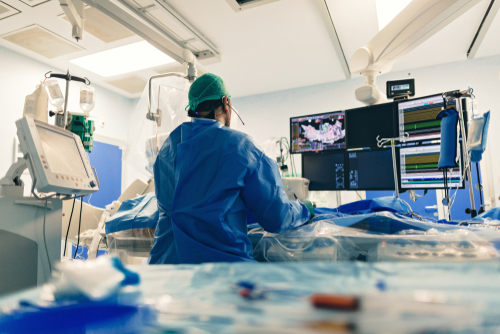Apollo uses 3D heart mapping smart touch technology to treat Cardiac Arrhythmia
UNI Jun 14, 2018
Apollo Hospitals on June 13 announced that it used 3D mapping smart touch technology (CARTO 3 system) in radio frequency ablation and it was performed on a 47-year-old patient suffering from Cardiac Arrhythmia.

The hospital also launched Tamil Nadu’s first Atrial Fibrillation and Arrhythmia Clinic to mark the occasion. Talking to reporters here, Dr A M Karthigesan, Senior Consultant Cardiologist and Electrophysiologist, said Cardiac Arrhythmia or an abnormal heartbeat, was a serious, but treatable condition that affects roughly 10 million Indians. Arrhythmias occur when the electrical impulses in the heart, which coordinate the heartbeats did not function properly, causing the heart to beat too fast, too slow or irregularly.
''The most common presenting symptoms are palpitation (awareness of fast heart beating), giddiness, breathing difficulty, loss of consciousness (syncope) and sudden death'', he said, adding, these cardiac rhythm disturbances could occur due to aging, hypertension, heart attack, lung and thyroid disease and heart failure.
Sometimes it could happen because of birth defect in cardiac electrical system or genetic disorders. Among the various Heart Rhythm Disorders, Atrial fibrillation (AF) was most common and it was first demonstrated on ECG more than a century ago. Dr Karthigesan said the patient, Balamurugan, from Panruti was admitted to Apollo with palpitation, shortness of breath and was diagnosed with Cardiac Arrhythmia.
He said his team decided to use the 3D mapping smart touch technology (CARTO) to safely ablate tiny areas of diseased heart tissue that caused rhythm disturbances. Speaking about the procedure, he said this was a significant improvement in patient safety and the performance of minimally invasive procedures. ''Current methods for visualizing the heart, using X-rays and fluoroscopy, are potentially hazardous because they involve radiation and produce only two dimensional images, which are not as accurate as 3D images'', he added.
He said 3D mapping allows in pinpointing the catheter’s tip during a procedure, giving the electrophysiologist a more concrete awareness on the placement of abrasions. “If the condition is ignored cardiac arrhythmia could lead to stroke”, he said.
-
Exclusive Write-ups & Webinars by KOLs
-
Daily Quiz by specialty
-
Paid Market Research Surveys
-
Case discussions, News & Journals' summaries